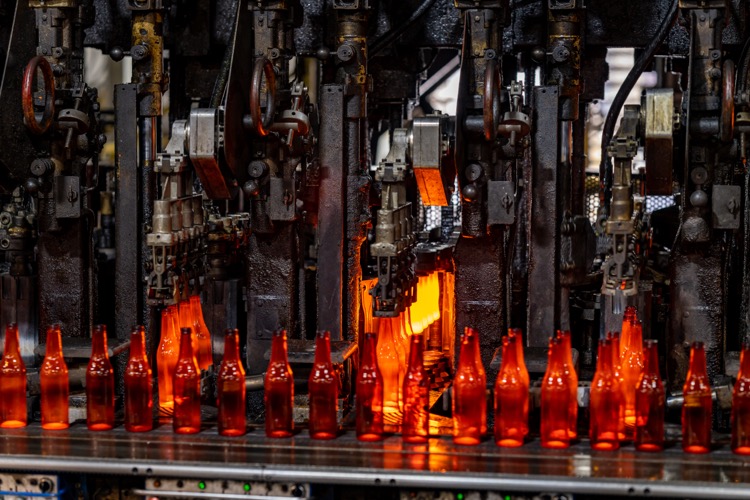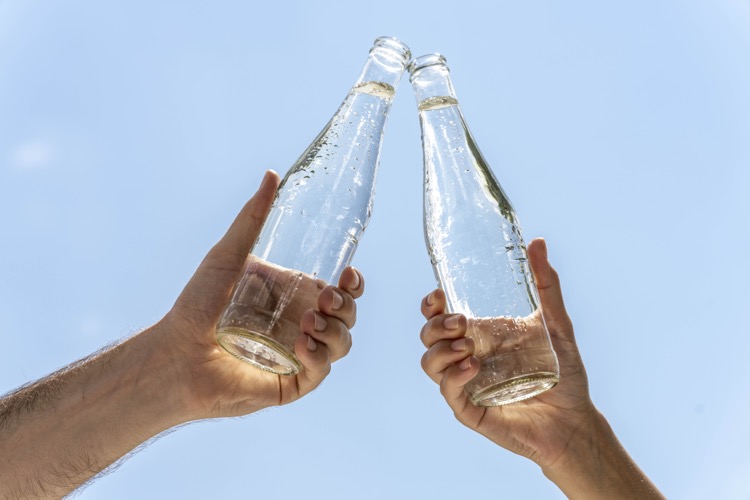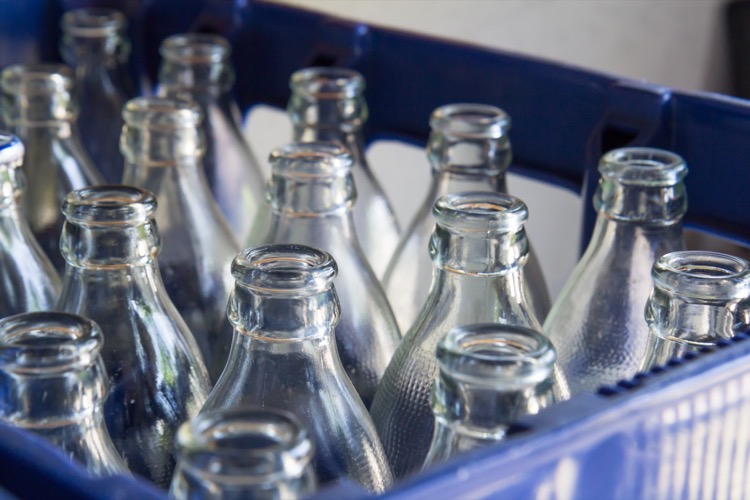- O-I expands use of carbon-lowering heat recovery system at its French operations with a new system installed at the Veauche Plant, expanding the use of existing heat recovery at other O-I plants in France
- Repurposed heat in Veauche will provide up to 94 percent of plant’s heating needs
- Heat recovery in Veauche is another advancement in O-I’s sustainability and decarbonization strategy
Perrysburg / Vaulx-en-Velin (February 13, 2024) — O-I Glass, Inc. (“O-I Glass” or “O-I”) plans to install a waste heat recovery system at its Veauche, France operations. Heat recovered from the facility’s glassmaking furnace will feed a new internal energy distribution network and will supply up to 94 percent of the plant’s heating needs.
“We’re leveraging product and process innovations to transform our operations toward lower-carbon outcomes,” said Randy Burns, Chief Sustainability and Corporate Affairs Officer for O-I Glass. “Heat recovery is one of the many levers we are using to advance the sustainability of our operations through energy efficiency.”
O-I’s sustainability roadmap has set challenging, but attainable goals for energy efficiency technology advancement, along with the sourcing of renewable electricity and emissions reduction. The company is targeting 40 percent renewable electricity use by 2030 and to reduce total energy consumption by 9 percent globally.
Transformational funds provided by the French Environment and Energy Management Agency (ADEME) supported the installation of the heat recovery system. Technical support for the system is provided through a partnership with ENGIE Solutions, which contributed its expertise in feasibility analysis, planning, and funding, and will implement and operate the equipment on site. The partnership builds upon a broader agreement with ENGIE, a leading French multinational utility company, to supply O-I facilities across Europe with green electricity generated from solar, wind and hydro sources over a ten-year period.
For Walter Ferrer, Managing Director of O-I Glass for the South-West Europe region, “this project makes a very tangible contribution to decarbonizing the Veauche site, improves its competitiveness and is in line with the company’s overall strategy towards sustainable development. With the contribution of ENGIE Solutions’ skills in energy performance and the support of ADEME and the French government, it also illustrates our ability to forge strategic partnerships with private and public players. This operation is especially important for us because it can serve as a blueprint for other plants”.
In addition to the installation of heat recovery technology at the Veauche facility, O-I has similar systems in place in its French plants of Reims and Vayres. The heat recovered from the Reims plant is used in domestic homes in the local community. In Vayres, the heat is used to pre-heat recycled glass – an important raw material in glass manufacturing – which in turn reduces energy consumption manufacturing process.
To learn more about the ways O-I is advancing sustainability and energy efficiency in its global operations, visit http://o-i.com/sustainability/
ABOUT O-I
At O-I Glass, Inc. (NYSE: OI), we love glass and we’re proud to be one of the leading producers of glass bottles and jars around the globe. Glass is not only beautiful, it’s also pure, healthy and completely recyclable, making it the most sustainable rigid packaging material. Headquartered in Perrysburg, Ohio (USA), O-I is the preferred partner for many of the world’s leading food and beverage brands. We innovate in line with customers’ needs to create iconic packaging that builds brands around the world. Led by our diverse team of approximately 24,000 people across 68 plants in 19 countries, O-I achieved revenues of $6.9 billion in 2022. Learn more about us:
o-i.com / Facebook / Twitter / Instagram / LinkedIn
CONTACT:
James Woods
PR Lead
+1 724-732-5748
Forward-Looking Statements
This press release contains “forward-looking” statements related to O-I Glass, Inc. (“O-I Glass” or the “company”) within the meaning of Section 21E of the Securities Exchange Act of 1934, as amended (the “Exchange Act”) and Section 27A of the Securities Act of 1933, as amended. Forward-looking statements reflect the company’s current expectations and projections about future events at the time, and thus involve uncertainty and risk. The words “believe,” “expect,” “anticipate,” “will,” “could,” “would,” “should,” “may,” “plan,” “estimate,” “intend,” “predict,” “potential,” “continue,” and the negatives of these words and other similar expressions generally identify forward-looking statements.
It is possible that the Company’s future financial performance may differ from expectations due to a variety of factors including, but not limited to the following: (1) the general political, economic and competitive conditions in markets and countries where the Company has operations, including uncertainties related to economic and social conditions, trade disputes, disruptions in the supply chain, competitive pricing pressures, inflation or deflation, changes in tax rates and laws, war, civil disturbance or acts of terrorism, natural disasters, public health issues and weather, (2) cost and availability of raw materials, labor, energy and transportation (including impacts related to the current Ukraine-Russia and Israel-Hamas conflicts and disruptions in supply of raw materials caused by transportation delays), (3) competitive pressures, consumer preferences for alternative forms of packaging or consolidation among competitors and customers, (4) changes in consumer preferences or customer inventory management practices, (5) the continuing consolidation of the Company’s customer base, (6) the Company’s ability to improve its glass melting technology, known as the MAGMA program, and implement it within the timeframe expected, (7) unanticipated supply chain and operational disruptions, including higher capital spending, (8) seasonability of customer demand, (9) the failure of the Company’s joint venture partners to meet their obligations or commit additional capital to the joint venture, (10) labor shortages, labor cost increases or strikes, (11) the Company’s ability to acquire or divest businesses, acquire and expand plants, integrate operations of acquired businesses and achieve expected benefits from acquisitions, divestitures or expansions, (12) the Company’s ability to generate sufficient future cash flows to ensure the Company’s goodwill is not impaired, (13) any increases in the underfunded status of the Company’s pension plans, (14) any failure or disruption of the Company’s information technology, or those of third parties on which the Company relies, or any cybersecurity or data privacy incidents affecting the Company or its third-party service providers, (15) risks related to the Company’s indebtedness or changes in capital availability or cost, including interest rate fluctuations and the ability of the Company to generate cash to service indebtedness and refinance debt on favorable terms, (16) risks associated with operating in foreign countries, (17) foreign currency fluctuations relative to the U.S. dollar, (18) changes in tax laws or U.S. trade policies, (19) the Company’s ability to comply with various environmental legal requirements, (20) risks related to recycling and recycled content laws and regulations, (21) risks related to climate-change and air emissions, including related laws or regulations and increased ESG scrutiny and changing expectations from stakeholders and the other risk factors discussed in the Company’s filings with the Securities and Exchange Commission.
It is not possible to foresee or identify all such factors. Any forward-looking statements in this document are based on certain assumptions and analyses made by the Company in light of its experience and perception of historical trends, current conditions, expected future developments, and other factors it believes are appropriate in the circumstances. Forward-looking statements are not a guarantee of future performance and actual results or developments may differ materially from expectations. While the Company continually reviews trends and uncertainties affecting the Company’s results of operations and financial condition, the Company does not assume any obligation to update or supplement any particular forward-looking statements contained in this document.


















